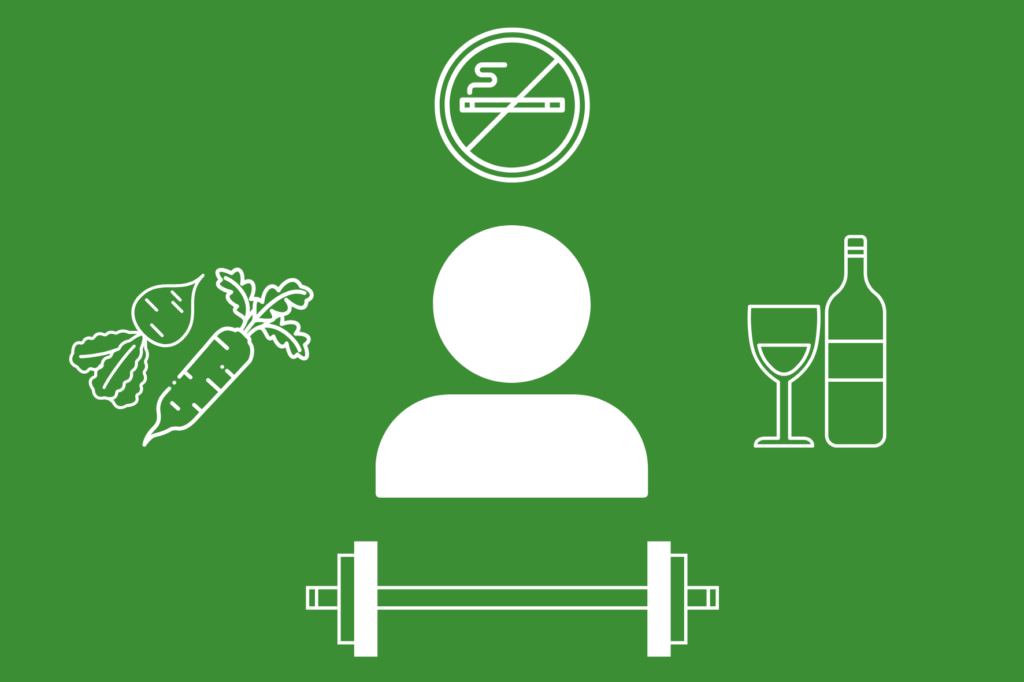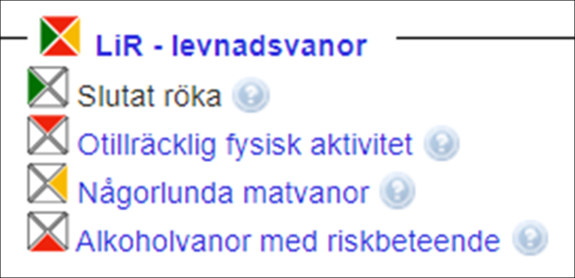
The treatment of rheumatic diseases should not stop only to pharmaceutical products. More and more research and clinical interventions are now focusing on the role of lifestyle factors in the well-being of the patients, in terms of improvement of disease characteristics, pain and, more in general, quality of life, as well as a lower risk of comorbidities.
However, there is still a deep knowledge gap when it comes to the role of diet in the management of rheumatic diseases. The 2021 EULAR recommendations on lifestyle factors highlighted the lack of high-quality, homogeneous studies for diet (see reference). Most of the studies had moderate to high risk of bias and most were intervention studies or clinical trials conducted in monitored settings, that therefore might not be representative of real-life behaviors.
Information on lifestyle factors in SRQ
A couple of years ago, SRQ started the discussion on how to integrate information on lifestyle in clinical practice and in the decision support tool (Beslutstödet). The main aim was to present the information on lifestyle factors that were collected in the register to the patients and caregivers, so that the patients could get information on how to improve their lifestyle, if needed. At the time, only smoking and physical activity were included in the patient’s own registration PER (Patientens egen registrering), but we knew that we couldn´t address lifestyle without including diet and alcohol consumption.
The patient’s own registration of lifestyle habits has been developed by the LiR group (Lifestyle Habits in Rheumatology, Levnadsvanor inom Reumatologin, with Ann-Marie Calander as the project leader and included Alexandra Roth, Björn Sundström, Emma Swärdh, Maria Nylander, Mathilda Björk and Nina Brodin) with some adaptation to the recommendations of Kunskapsstyrningens NPO Levnadsvanor and Socialstyrelsen. By using a simple graphic and colors, it is easy for the caregiver and the patient to quickly evaluate the lifestyle and discuss how to improve it (Figure 1).

Figure 1
In April 2023, questions on diet and alcohol consumption were added in PER. The questions are not mandatory and are a part of the complete PER, which the patients are asked to respond to yearly after the first year of disease. Patients were engaged in responding to the forms and in 1 year more than 30,000 patients have provided their information. Now, in September 2024, 44,000 registrations of diet have been reported (of which only 715 incomplete across the 4 questions). More than 8,000 patients have longitudinal data (i.e. multiple records), of which around 1,000 have improved and 1,000 have lowered their score. Similar numbers can be seen for alcohol, with 45 percent of those with a risk consumption moving towards a healthy lifestyle.
Promising opportunities for research advancements
It might not seem so, but the lifestyle data collection in SRQ is right now one of the biggest data collections on diet and alcohol in the world of rheumatology. A very large cohort of patients have reported longitudinal data, which is the dream for every researcher who wants to look into diet and rheumatic diseases! There are so many questions that still today remain unanswered.
Alcohol consumption
Regarding alcohol, using the information from the SRQ, we can estimate the number of glasses of alcohol a patient consumes in a week. Therefore, we can longitudinally monitor the patients’ lifestyle choices right after their diagnosis, at start of a specific treatment, and if they follow the recommendation of limiting alcohol consumption connected to some treatment (for example methotrexate). Moreover, it will be interesting to understand if and how alcohol consumption is associated with treatment efficacy and prognosis of patients in the short and long term.
Impact of dietary lifestyle
Large-scale research in diet is usually performed using food frequency questionnaires, lengthy questionnaires including hundreds of questions on the usual consumption of several dietary items. SRQ only includes 4 questions on diet: consumption of
-
- vegetables
- fish or seafood
- fruits
- snacks (kaffebröd, godis, chips and läsk).
It will therefore not be possible to understand the role of specific food items or be able to calculate the detailed nutrient intake, nor evaluate dietary patterns.
However, this data will still be useful to understand how changes in diet, in particular following a healthier dietary lifestyle (more vegetables, fruits and fish and less snacks), can impact the disease course. Also, it would be interesting to see how this impact patients in different stages of the disease.
Conclusion
The SRQ data regarding lifestyle factors were not intended for research purposes. Nonetheless, they represent a unique pool of data that can help answer many of the research questions that underly the possibility of implementing a personalized non-pharmacological management of the rheumatic diseases.
Ref. 2021 EULAR recommendation regarding lifestyle behaviors and work participation to prevent progression of rheumatic and musculoskeletal diseases. Gwinnutt JM et al, Ann Rheum Dis 2023; 82:48–56
Patientens Egen Registrering av levnadsvanor i SRQ
PER Levnadsvanor Patientens egen registrering av levnadsvanor har utvecklats av LiR-gruppen (Levnadsvanor inom Reumatologin) med viss anpassning till kunskapsstyrningens och Socialstyrelsens rekommendationer.
Rökning – PER-fråga med fyra svarsalternativ. Ohälsosam levnadsvana markeras med rött (röker) eller gult (röker ibland/feströkare). Aldrig rökt eller slutat röka markeras med grönt. SRQ har ingen fråga om annat tobak- eller nikotinbruk.
Fysisk aktivitet – Socialstyrelsens tre indikatorfrågor om fysisk träning, vardagsmotion och stillasittande. Antal minuter vardagsmotion och antal minuter fysisk träning x 2 räknas samman. Ohälsosam levnadsvana indikeras med rött (färre än 150 minuter per vecka) eller gult (150–300 minuter per vecka). Motion i fler än 300 minuter per vecka markeras med grönt.
Matvanor – Fyra frågor baserade på Socialstyrelsens kostindex avseende frukt, grönsaker, fisk och skaldjur samt produkter som innehåller socker. Varje fråga ger 0–3 poäng och summan räknas samman. Ohälsosamma matvanor (färre än 5 poäng) markeras med rött, någorlunda matvanor (5–8 poäng) markeras med gult. Hälsosamma matvanor (fler än 8 poäng) markeras med grönt.
Alkoholvanor – Screeninginstrumentet AUDIT-C med 3 frågor som vardera ger 0–4 poäng. Fler än 4 poäng (kvinnor) eller 5 poäng (män) kan indikera riskbruk och markeras med rött. Grön eller gul markering används inte för alkoholvanor.

Daniela Di Giuseppe Docent in epidemiology, statistician at SRQ
Texten publicerades ursprungligen i Reumabulletinen nr. 7/2023.